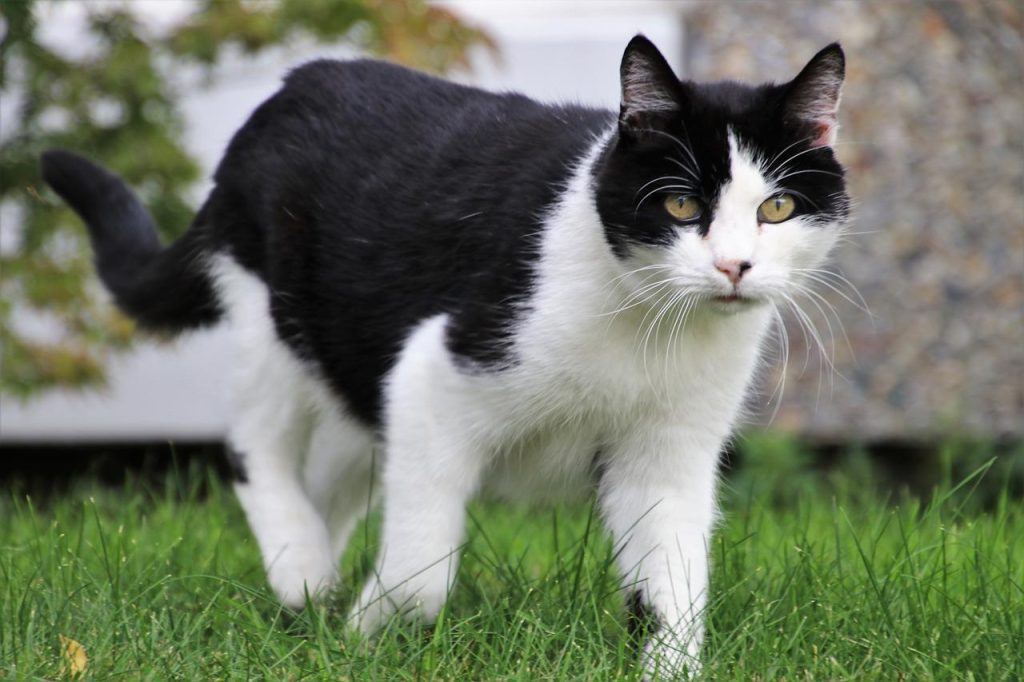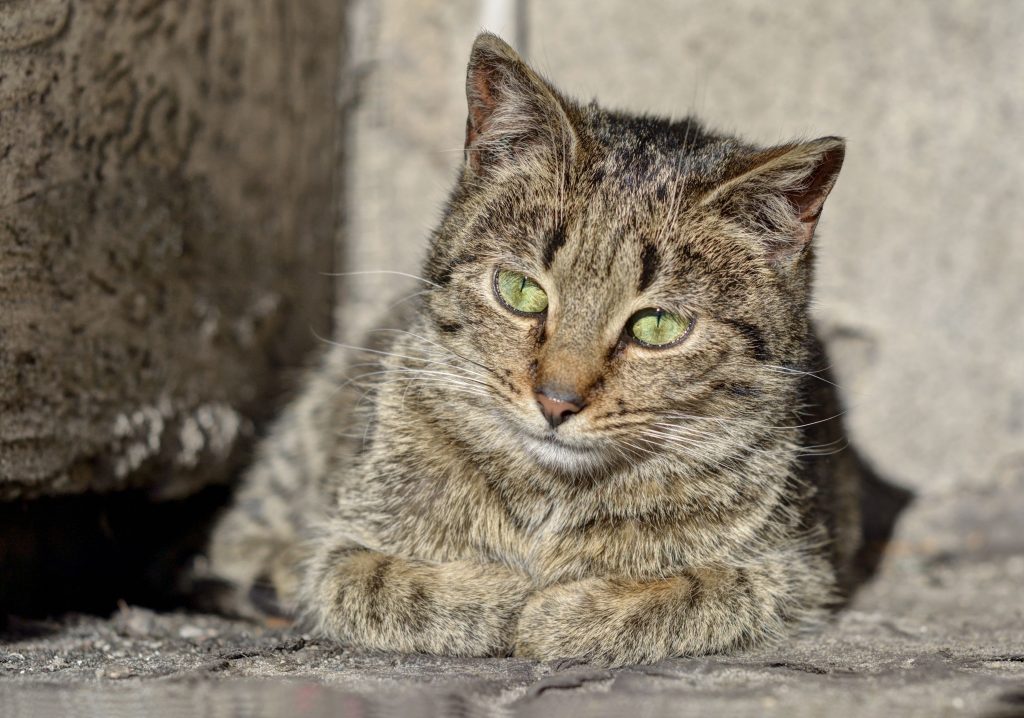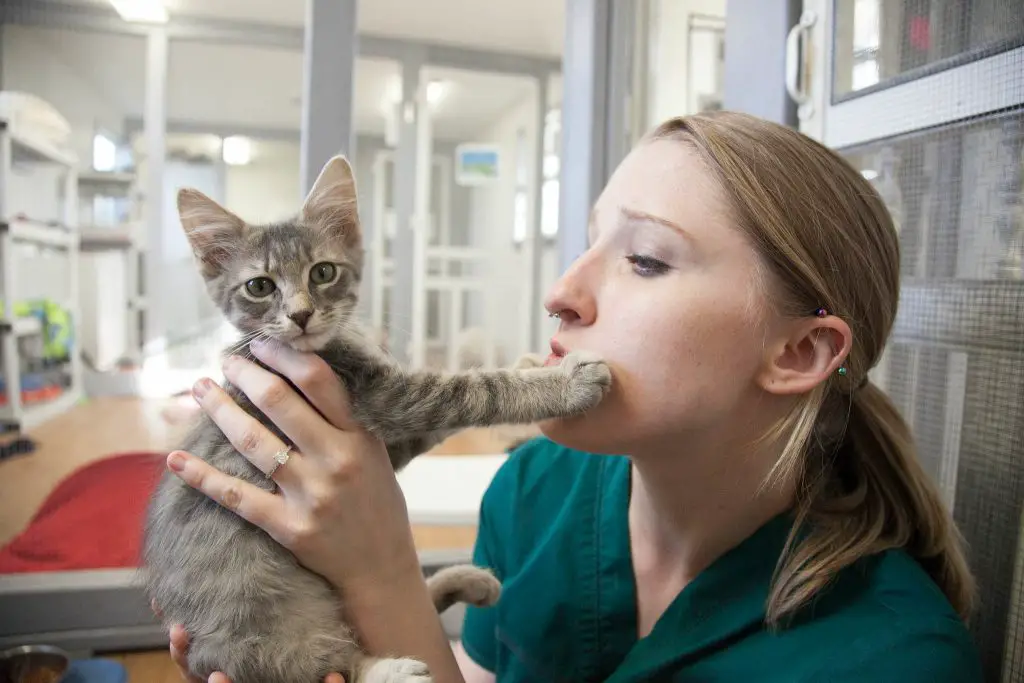If your cat is limping on its back leg or not eating, it might be injured. Cats are very good at hiding their pain, so you might not even know that they’re injured until it’s too late.
In this blog post, we will discuss the most common injuries that cats can suffer and what you should do if your cat is injured. We will also provide some tips on how to keep your cat safe and healthy.
Кеy Takeaway
- If your cat is limping on its back leg and not eating, it may be experiencing significant pain from an injury or health issue like a joint dislocation, bone fracture, infection, or a condition such as feline calicivirus that requires immediate veterinary attention.
- Cats often stop eating when they are injured as the pain can lead to loss of appetite and their bodies may go into a survival mode.
- You should take your cat to the vet for limping immediately if there is a visible cause such as bleeding, swelling, or the limb hanging in a strange way, or if the limp persists for more than 24 hours to avoid the possibility of infection and to prevent their condition from worsening.
Cat Limping on Back Leg and Not Eating

A cat limping on its back leg and not eating could be due to a variety of reasons, including injury, infection, cardiovascular disease, or pain, and it’s crucial to seek veterinary care promptly for accurate diagnosis and treatment.
Injury
A cat may limp and refuse to eat if it has suffered an injury to its leg. This could be a break, sprain, or strain that causes pain and discomfort, reducing the cat’s appetite and mobility.
Infection
Infections from bites, scratches, or wounds can lead to limping if they affect the leg. The associated pain and illness can also decrease a cat’s appetite.
Cardiovascular Disease
Cardiovascular disease can cause a cat’s hind legs to stop working properly, leading to limping. A cat with this condition may become less active and lose its appetite.
Pain from Arthritis
Pain from arthritis can cause limping and loss of appetite in cats. The discomfort associated with this condition can impact the cat’s willingness to move and eat.
Nerve Damage
Nerve damage can also lead to limping in cats. If the nerve damage is severe, it can impact the cat’s ability to move its leg properly, and the pain can cause a reduced appetite.
Gastrointestinal Problems
Gastrointestinal problems, such as upset stomach or blockages, can cause a cat to stop eating. If these issues are causing discomfort when the cat moves, it could also lead to limping.
Kidney Disease
Kidney disease can cause a variety of symptoms in cats, including loss of appetite. If the disease is advanced, it may cause discomfort that leads to limping.
Cancer
Cancer can cause a range of symptoms in cats, depending on the type and stage of the disease. Limping can occur if the cancer is affecting the cat’s leg, and loss of appetite is a common symptom of many types of cancer.
Do Cats Stop Eating When Injured?

Yes, cats often stop eating when they are injured as pain or discomfort can decrease their appetite and overall demeanor.
When cats are injured, they may exhibit a variety of changes in behavior, one of the most common being a decreased appetite or refusal to eat.
This is often because the pain or discomfort from the injury makes them feel unwell. Additionally, stress and anxiety related to the injury can also affect a cat’s desire to eat.
Cats are known for hiding their pain, so a noticeable decrease in appetite is often a clear sign that something is wrong.
It’s important to get your cat to a vet if they stop eating, especially if it’s coupled with other signs of injury or illness, as it could indicate a serious issue that needs immediate attention.
When Should I Take My Cat To The Vet For Limping?

You should take your cat to the vet for limping immediately if there is a visible cause such as bleeding, swelling, or the limb is hanging in a strange way, or if the limping persists for more than 24 hours.
When a cat is limping, it’s a clear sign of discomfort or pain. If the cause of the limp is visible – for example, there’s bleeding, swelling, or the limb is hanging abnormally – immediate veterinary attention is required.
Waiting could potentially worsen the condition and lead to severe complications such as infection.
Even if the cause isn’t immediately apparent, but the limping persists for more than 24 hours, it’s important to seek professional help.
Cats are experts at hiding their pain, so persistent limping is often an indication that something is seriously wrong.
The vet can conduct a thorough examination to identify the cause of the limp and prescribe appropriate treatment, which could include medication, surgery, or rest and recovery at home says VCAHospitals.
How Do You Tell If My Cat’s Leg Is Broken or Sprained?
Telling if your cat’s leg is broken or sprained involves observing for signs such as abnormal movement, swelling, pain, and vocalizations.
Abnormal Movement
A cat with a broken or sprained leg will often limp or refuse to put weight on the affected limb. The leg may appear to hang oddly or move unnaturally when the cat walks.
Swelling
Both sprains and fractures can lead to visible swelling of the affected area. The swelling can be severe in case of a break, but even a sprain can cause noticeable inflammation.
Pain
Pain is a common symptom of both breaks and sprains. A cat may react aggressively or fearfully when you try to touch the injured area, indicating discomfort or pain.
Vocalizations
Cats may vocalize more than usual when they’re in pain. If your cat is meowing excessively, hissing, or growling, it could indicate that they are suffering from a broken or sprained leg.
Visible Deformity
In the case of a severe break, there might be a visible deformity such as a bone protruding through the skin. This is a clear sign of a fracture and requires immediate veterinary attention.
Can I Give My Cat Over-the-counter Pain Medication For The Limp?
No, you should not give your cat over-the-counter pain medication without consulting a vet as it can be harmful to them.
Toxicity Risk
Many over-the-counter (OTC) pain medications that are safe for humans are toxic to cats. For example, medications such as ibuprofen and acetaminophen can cause severe health issues in cats, including kidney damage, liver failure, and even death.
Incorrect Dosage
Even if a certain medication is safe for cats, determining the correct dosage can be difficult without professional guidance. Overdosing can lead to serious health complications or make an existing condition worse.
Masking Symptoms
Giving pain medication could potentially mask the symptoms of a more serious issue. This could delay the diagnosis and treatment of the underlying problem causing the limp, leading to further health complications.
Potential for Adverse Reactions
Cats can have adverse reactions to medications, including OTC ones, that could worsen their condition. These could range from mild allergic reactions to severe health issues.
FAQs
Q: What should I do if my cat is limping on its back leg?
A: If your cat is limping on its back leg, it is important to keep them calm and restrict their activity. Try to examine the leg for any visible injuries or swelling. If there are no obvious signs, it is recommended to schedule a visit to the vet to determine the cause of the limp.
Q: My cat is not eating, could it be related to the limping?
A: It is possible that your cat’s lack of appetite could be related to the limping. Pain and discomfort can often cause a decrease in appetite in cats. However, it is also important to consider other factors that could be causing the loss of appetite, such as illness or stress. A visit to the vet can help determine the cause.
Q: Should I be concerned if my cat is limping but still eating and drinking normally?
A: While it is a good sign that your cat is still eating and drinking normally, it is still important to address the limping issue. Limping can be a sign of an underlying injury or condition that needs to be treated. It is best to schedule a visit with your vet for a proper evaluation.
Q: How can I prevent my cat from injuring its back leg again?
A: To prevent your cat from injuring its back leg again, you can take several precautions. Keep your cat indoors to minimize the risk of accidents or fights with other animals. Ensure that the environment is cat-friendly with no hazards or obstacles that could cause injury. Regular exercise can also help strengthen your cat’s muscles and reduce the risk of injury.
Q: Is it common for cats to limp on their back legs?
A: Limping in cats is not uncommon and can occur for various reasons. Injuries, strains, arthritis, and other medical conditions can cause limping in cats. If you notice your cat limping, it is always best to have them examined by a veterinarian to determine the underlying cause and provide appropriate treatment.
Q: How long does it take for a cat’s back leg to heal from an injury?
A: The healing time for a cat’s back leg injury can vary depending on the severity of the injury and the treatment provided. Minor injuries may heal within a couple of weeks with proper rest and care. More serious injuries or fractures may take several weeks or even months to fully heal. It is important to follow your vet’s instructions for post-injury care.
Q: Can a cat’s limp on its back leg be a sign of a serious medical condition?
A: Yes, a cat’s limp on its back leg can be a sign of a serious medical condition. It could be indicative of an injury, nerve damage, or even a tumor. If you notice your cat limping for an extended period of time or if the limp worsens, it is crucial to seek veterinary attention to rule out any serious underlying conditions.
Q: How much does it cost to treat a cat’s back leg injury?
A: The cost of treating a cat’s back leg injury can vary depending on the severity of the injury, the necessary diagnostic tests, and the treatment plan. It is best to consult with your veterinarian for an accurate estimate of the costs involved. They can provide you with detailed information on the expected expenses for your cat’s specific condition.
Conclusion and final thoughts
In conclusion, a cat limping on their back leg and not eating is not only concerning but also requires immediate attention from a veterinarian.
As discussed in this blog post, there are several possible reasons for these symptoms, ranging from minor injuries to underlying health conditions.
It is crucial to observe your cat’s behavior and seek medical help if the symptoms persist or worsen.




